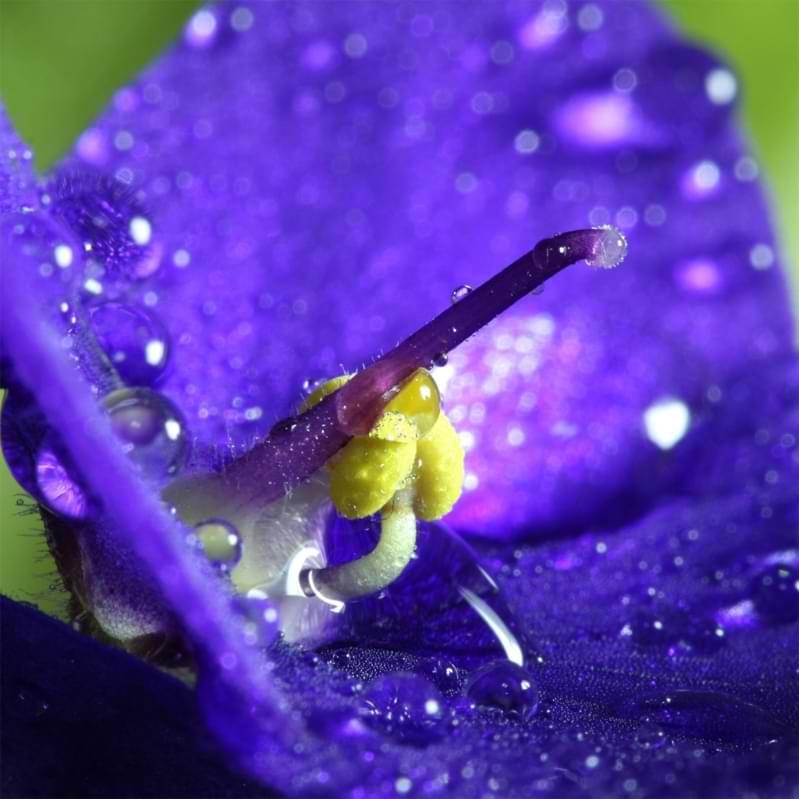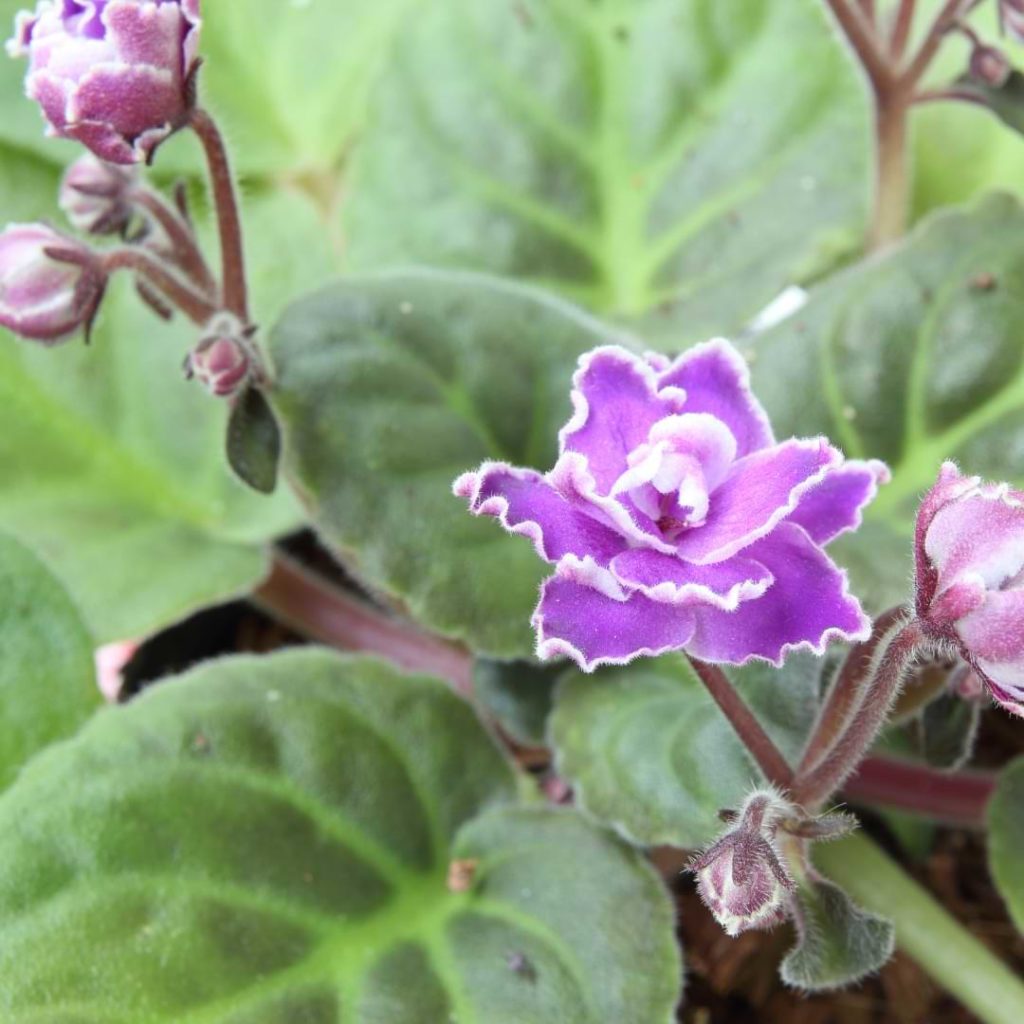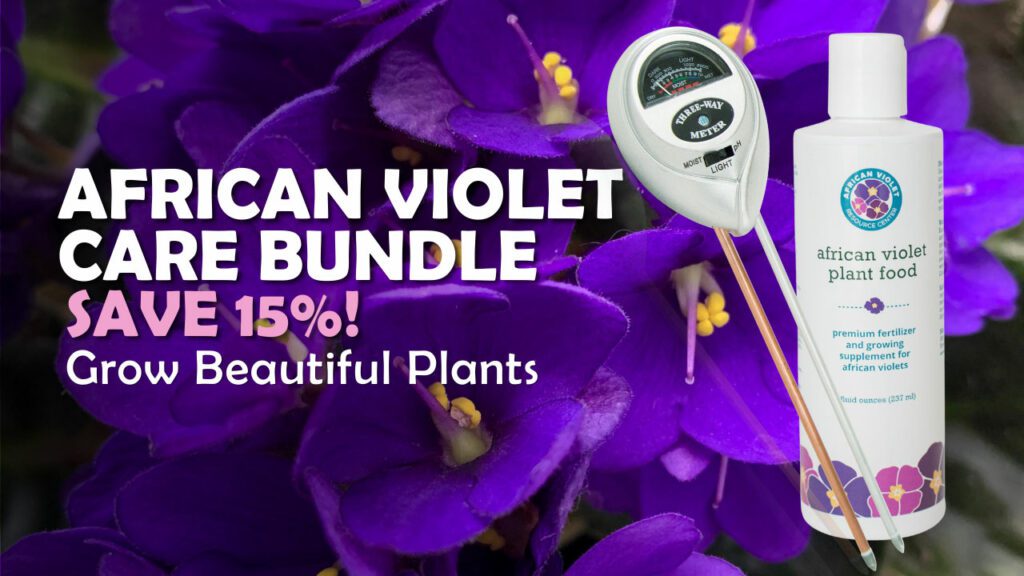One of the most common houseplants, African violets are loved not only for their beautiful appearance but also for their relative hardiness. It’s usually pretty easy to care for African violets, at least compared to many other houseplants. However, this doesn’t mean that African violets aren’t sometimes susceptible to disease and fungus just like any other plant.
The good news is that African violets don’t fall prey to disease and fungus too often, but if disease or fungus develops on your African violet, then you need to know what to do next.
Some, but not all, of the most common diseases African violets face can be treated. Sometimes it does take a good bit of extra care and attention, though. It’s also possible to prevent your African violet from being exposed to disease and fungus in the first place.
Keep reading to find out how you can protect your African violets from disease and fungus, and what to do to treat your African violets if these problems arise despite your best efforts.
Causes of African Violet Diseases & Fungus
It’s much easier to prevent your African violets from developing a disease or fungus than it is to cure the problem later on. As you’ll see in a moment, providing good growing conditions for your
African violets can solve a lot of problems before they even happen. Healthy African violets grown with proper care are less likely to fall victim to disease and fungus.
Let’s discuss the most frequent causes of African violet diseases and fungus; after all, if you know the causes, you’ll be able to stop your African violet from getting damaged or diseased in the first place.
Watering Frequency
Overwatering is one of the biggest problems for African violets (and most houseplants in general). Too much moisture creates conditions where disease and fungus can develop more readily.
Make sure you only water your African violet when the top part of the soil is completely dry. Gently stick your finger about ½ inch deep in the soil. If everything is dry, it’s time to water. However, if the soil is still wet, it’s too soon to water. African violets aren’t too bothered by the occasional dry spell, so it’s okay to wait an extra day or two if you aren’t sure if it’s time to water yet.
Soil Conditions & Drainage
Since overly wet soil can be a problem for African violets, it’s important to pay attention to the soil condition. Rather than using regular potting soil, use a mix made specifically for African violets. Regular potting soil is too dense and holds on to too much moisture and African violet potting soil drains more quickly.
You should also make sure your African violet’s container allows water to drain easily. Look for a container with holes in the bottom for adequate drainage. Otherwise, too much water will pool up in the soil and around the roots, creating the ideal conditions for problems to develop.

Temperature & Humidity
Temperature and humidity do not usually pose a problem for African violets because they are very good at surviving in the conditions provided by the average home. They like temperatures between 60-80 degrees Fahrenheit. While African violets enjoy a humidity rate of about 70-80% in their native environment, they’re also happy to grow in humidity levels between 50-60%, which shouldn’t be an issue in most homes.
African violets do need good air circulation, though, especially when the humidity is high; otherwise, fungus can begin to develop on the plants. While keeping African violets close together can create a microclimate, raising the humidity level, it’s best to make sure that the plants aren’t touching each other. You may even need to run a fan to circulate air if high humidity is a problem. Again, this isn’t likely to be a problem in most homes.
Cross-Contamination With New Plants
If you’re providing good care for your African violets, it’s unlikely that disease and fungus will develop. However, there is a risk of introducing disease and fungus anytime you bring new plants into your home.
Carefully inspect any plant, African violet or otherwise, before bringing it into your home with the rest of your African violets. Once a disease or fungus passes on to other plants, it can be difficult to stop the spread and save your plants. Do not bring any plant that shows signs of disease or fungus into your home.
Some people even go so far as to keep new plants in a separate area for a period of time just to make sure everything is fine. While this may seem excessive, if you have a large plant collection or plants that would be difficult to replace, it makes sense to quarantine any new plants before placing them with the rest of your collection.
Common African Violet Diseases
Now that you know what causes most African violet diseases and how to prevent most problems from arising in the first place, let’s look at what diseases tend to affect African violets most often. While you hopefully won’t ever see these diseases with your African violets, knowing the signs can help you treat your African violet quickly if something does pop up.
Bacteria Blight
This blight is caused by the bacteria Erwinia chrysanthemi, which is spread by insects or the use of dirty tools.
Symptoms
Bacteria blight shows up as black rot on your African violet’s crown and roots. Sometimes it will look brown or dark red instead of black. If you cut the leaves apart where the spots are, you’ll see sticky threads appear when you separate the two halves.
Treatment
Prevent the infected plant from coming into contact with other plants. Remove any leaves and roots that have spots. Be sure to sterilize your scissors or other tools between cuts.
Botrytis Blight
This blight is caused by the fungi Botrytis cinerea.
Symptoms
The first signs you’ll notice are gray blooms and a lack of growth at the crown. As the disease spreads, it will cause the leaves to have fuzzy gray and brown spots. If left untreated, you may notice that your African violet seems to “melt” as the plant begins to wilt.
Treatment
As soon as you notice symptoms, isolate any affected plants and remove any leaves or blooms with spots. Sterilize your tools between cuts. Afterward, apply a fungicide to keep the disease from returning. If you act quickly, you may be able to save your African violet.
Foliar Nematode
This disease is caused by tiny worms (too small for your eyes to see) that feed on African violet foliage.
Symptoms
The most visible symptoms are wilted leaves. If you check the underside of the leaves, you’ll see shiny brown and yellow spots between the veins.
Treatment
Treating this disease is very difficult. Isolate the plant immediately. If there are only a few affected leaves, you can remove them using sterilized tools and repot your African violet in a clean pot with fresh soil. Your African violet may be able to recover, but keep the plant away from other plants until you’re absolutely certain it has recovered.
There are chemical treatments for nematodes, but since you need a pesticide license to buy them, that’s not an option for most of us.
Powdery Mildew
This fungus affects African violets exposed to too much humidity without adequate air circulation.
Symptoms
At first you’ll notice a light powder that appears to uniformly cover the leaves and flowers. You may also see discoloration in the flowers. If the disease progresses, the plant’s growth will be stunned and flowers will fall off.
Treatment
Begin by isolating any plants with powdery mildew. The least harsh treatment is to treat your affected plants with a solution of one teaspoon of baking soda mixed with a quart of water. If this doesn’t work, you can use a fungicide designed to treat powdery mildew. Be sure to follow the directions carefully.
Pythium Root Rot
This is a fungal disease that develops in soil remaining wet for too long.
Symptoms
As the name implies, the roots begin to rot first, but you likely won’t be able to see this happening. Instead, you probably won’t notice anything until the stems begin to wilt and turn mushy.
Treatment
It’s very difficult to treat this disease because by the time it shows up in the stems, it’s too late to save your African violet. If you manage to catch it while it’s just affecting the roots, you can cut off any affected roots with sterilized equipment, and then repot the African violet in a new container with fresh, sterilized soil. However, it’s unlikely that you’ll catch the disease early enough to do this.
Ring Spot
Ring spot is sometimes called a water spot, and it’s the most common disease African violets get. Ring spot occurs when water that is too hot or too cold touches the leaf, injuring the leaf cells in that area. Although unattractive, it’s usually not a huge deal.
Symptoms
You’ll see yellow or bleached spots appear on the leaves where they came into contact with drops of water.
Treatment
You can’t get rid of ring spots once they’ve happened, but they don’t spread. You can just remove the damaged leaves so the damage doesn’t detract from the plant’s appearance. Switch to bottom watering so you won’t have to worry about accidentally splashing water on your African violets.
Rhizoctonia Crown Rot
Caused by the Rhizoctonia fungus, this disease is most commonly introduced to plants through using contaminated tools, pots, or potting soil when repotting or propagating new plants.
Symptoms
As the name suggests, this disease causes the crown to rot. You’ll see the leaves and flower stems turn black, and as the disease worsens, the plant will die.
Treatment
There is not a treatment for this disease. Remove the infected plant right away, making sure not to put the plant or the soil in a compost pile. Don’t reuse the soil from an infected plant, and thoroughly sterilize the plant’s container before reusing it with another plant.
African Violet Diseases Final Thoughts
Although there are a lot of diseases that can bother African violets, most of these diseases don’t occur too frequently (with the exception of ring spots, which are easy to avoid).
Take good care of your African violets to prevent disease and fungus from developing in the first place. As a quick reminder, here are a few of the best ways to keep your plants from having problems:
- Don’t overwater your African violets. Let the soil dry out between waterings.
- Keep your tools and containers sterilized.
- Make sure your African violets have adequate air circulation.
Also, carefully inspect any new African violets and isolate them to watch for signs of fungus or disease before bringing them into your home with other African violets.
Hopefully you won’t ever have to deal with diseases infecting your African violets. If you do have an African violet develop a disease, make sure to isolate it right away and keep it isolated while you treat the disease.
If you aren’t able to save an African violet that’s been infected, don’t feel too bad; all houseplant owners lose a plant from time to time. On the bright side, you’ve learned more about what not to do in the future, and you now have room to add another plant to your collection
Join the African Violet Club!
Whether you’re just starting out or are a seasoned grower, African Violet Resource Center has everything you need to help your plant grow vibrant and strong. Explore our other articles, visit our online shop, and connect with other houseplant lovers in our Facebook group to learn everything you need to know about this rewarding hobby!
More Great African Violet Resources
How to Grow Trailing African Violets
African Violet Potting Soil pH Guide
6 Reasons Your African Violet Won’t Bloom and How to Fix Them







